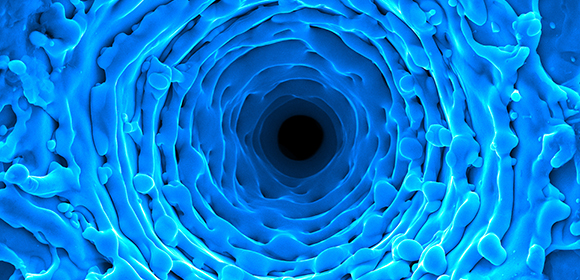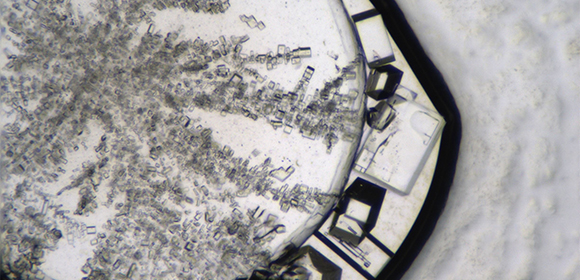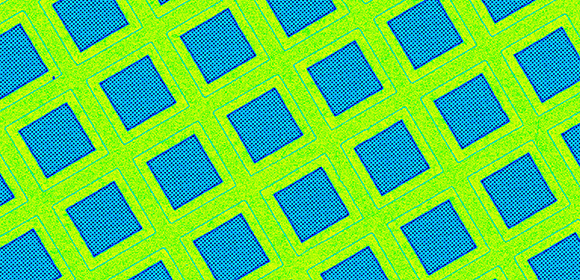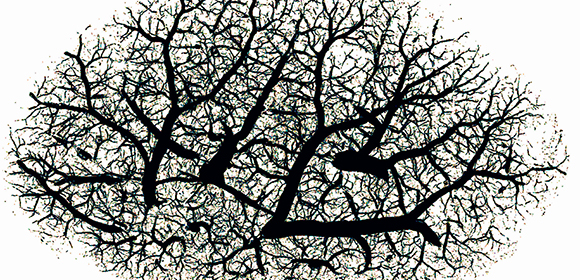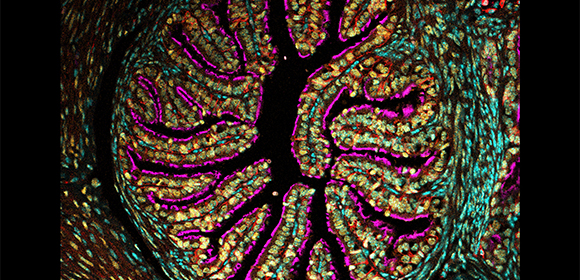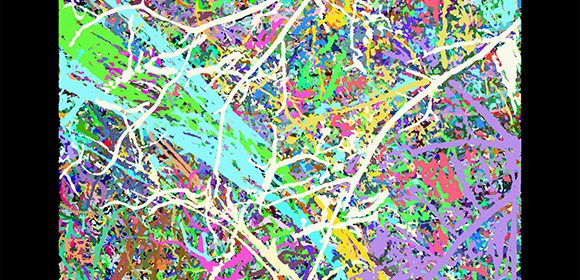Keep an eye out
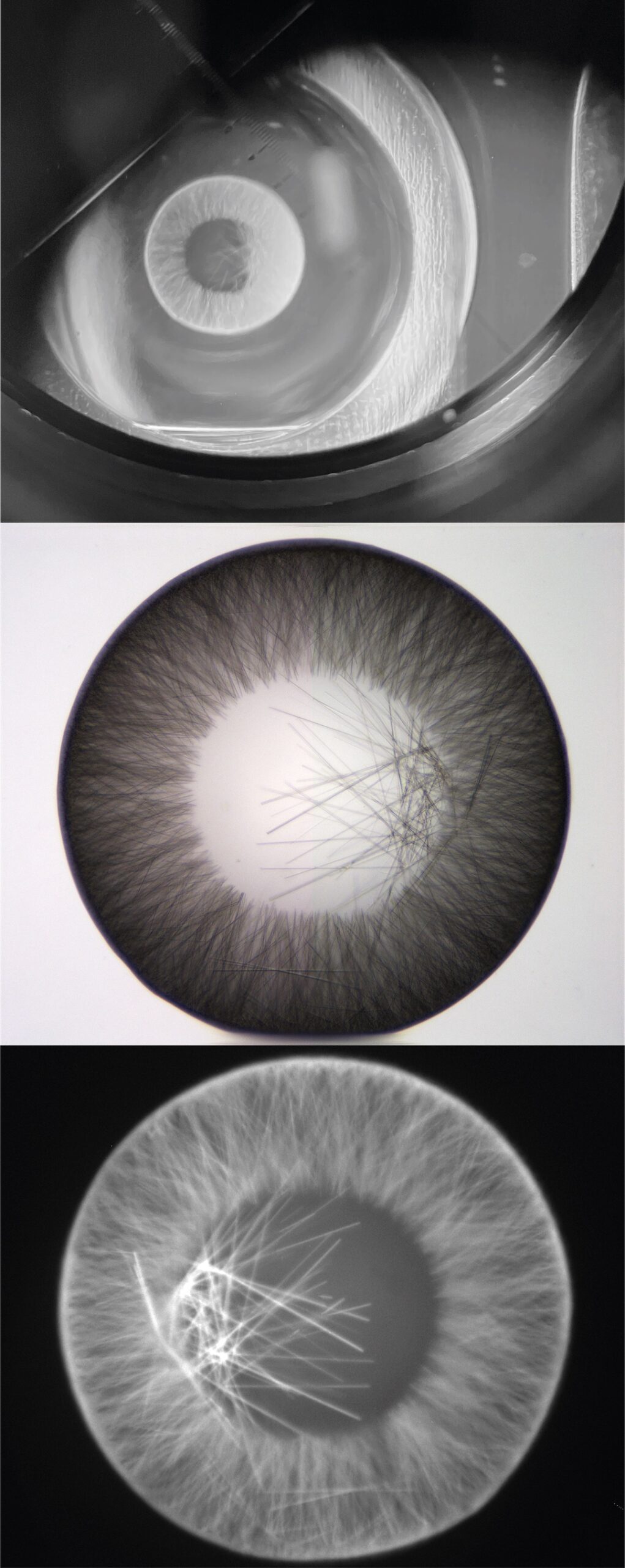
Like salt crystals we use to season our meals, complex protein molecules can also form crystals, given the right conditions and a bit of luck.
These images show a glimpse through the microscope of a tiny liquid drop that contains minuscule needle-shaped crystals illuminated under visible and UV-light. The crystals are made from malaria parasite proteins interacting with a small type of antibody called a ‘nanobody’. The nanobodies target malaria proteins and block parasite development and transmission.
Specialised robotics at the Monash Macromolecular Crystallisation Facility were used to set up and image the crystals. The crystals were then exposed to a powerful X-ray beam at just below the speed of light, generating a three-dimensional model of the interacting proteins.
With this molecular map, researcher Melanie aims to reveal how the nanobody and malaria proteins interact in atomic detail, providing insights into how malaria transmission can be blocked to prevent the spread of disease.


